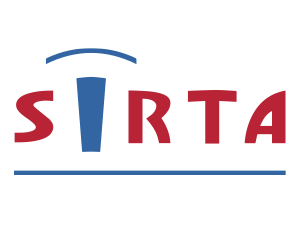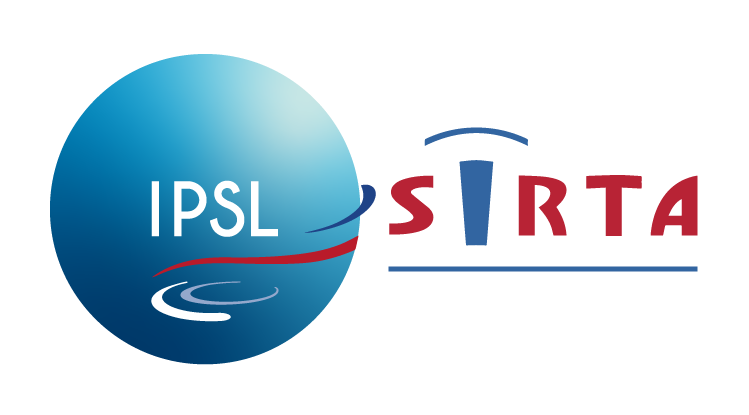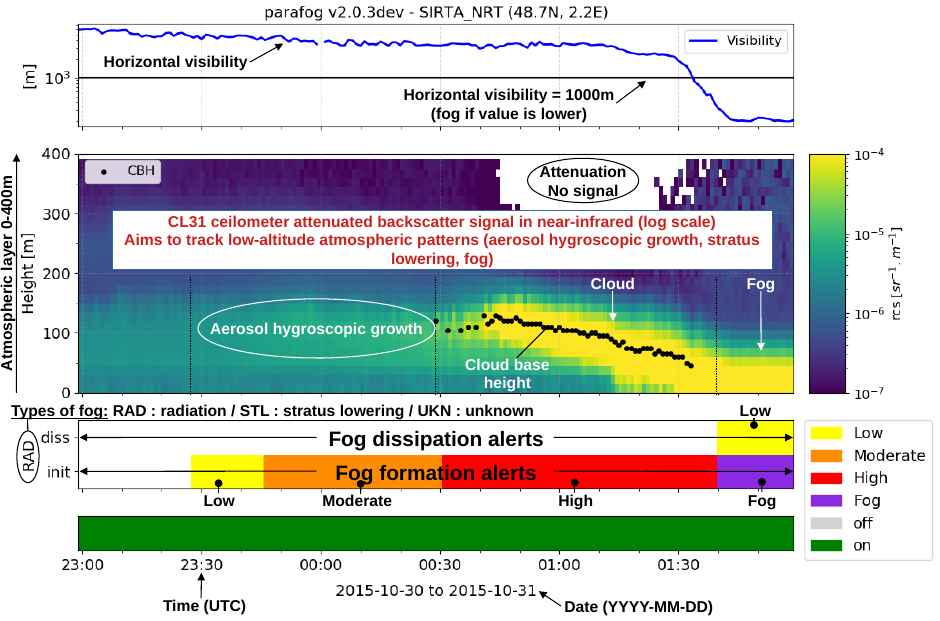Clouds and radiation
This working group is focused on the clouds from the surface to the upper troposphere. Activities are dedicated to develop synergetic approaches in order to better document, forecast and understand the fog life cycle. Moreover, the radiative measurements and cloud radiative effect are in the center of this working group using as input parameters the cloud cover processed by total sky-imager. Significant work is also done to optimize with the GRUAN certification the best profile of thermodynamics along the vertical using radiosonde. Ground-based instruments are used but also satellite data are compared to validate some algorithm whose objective is to derive geophysical processes and data.
Lab and people involved in the WG
Activities and projects
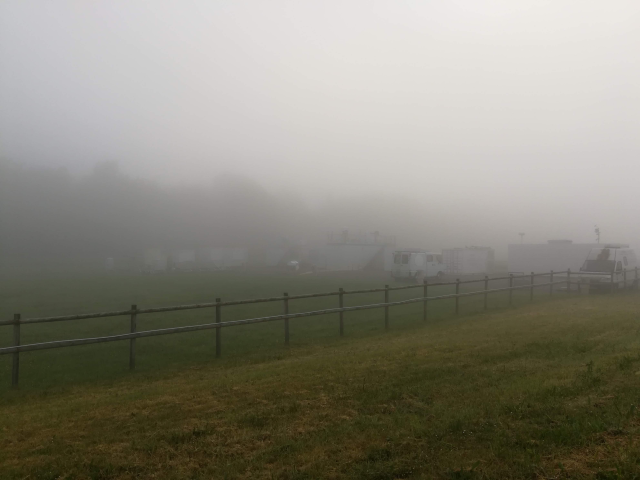
1. Fog process research
Contact: Jean-Charles Dupont
The SIRTA is a multi-instrumental atmospheric observatory located 20 km south of Paris at the university campus of École Polytechnique. This location has a relatively high fog incidence, of about 30 cases per year, mostly occurring between October and March. The long time series of in-situ and remote sensing measurements of relevant fog variables such as turbulence, short and long-wave radiation, upper and lower boundaries, inner reflectivity, liquid water path, droplet size distribution and temperature, pressure and humidity profiles, continues to enable highly relevant studies on the physical processes driving the fog life cycle.
2. Fog nowcasting tools
Contact: parafog-contact@listes.ipsl.fr
PARAFOG is a near-real time decision tool that aims to support nowcasting fog formation event at local scales. It is based upon combination sets of Automatic Lidars and Ceilometers observables together with meteorological station and visibility measurements. To date, the PARAFOG algorithm retrieves fog alert levels (low, mod, high) specific to radiation and stratus lowering conditions, minutes to hours prior to fog onset. PARAFOG is experimentally used at SIRTA and Paris airports (Roissy-Charles-de-Gaulle and Orly).
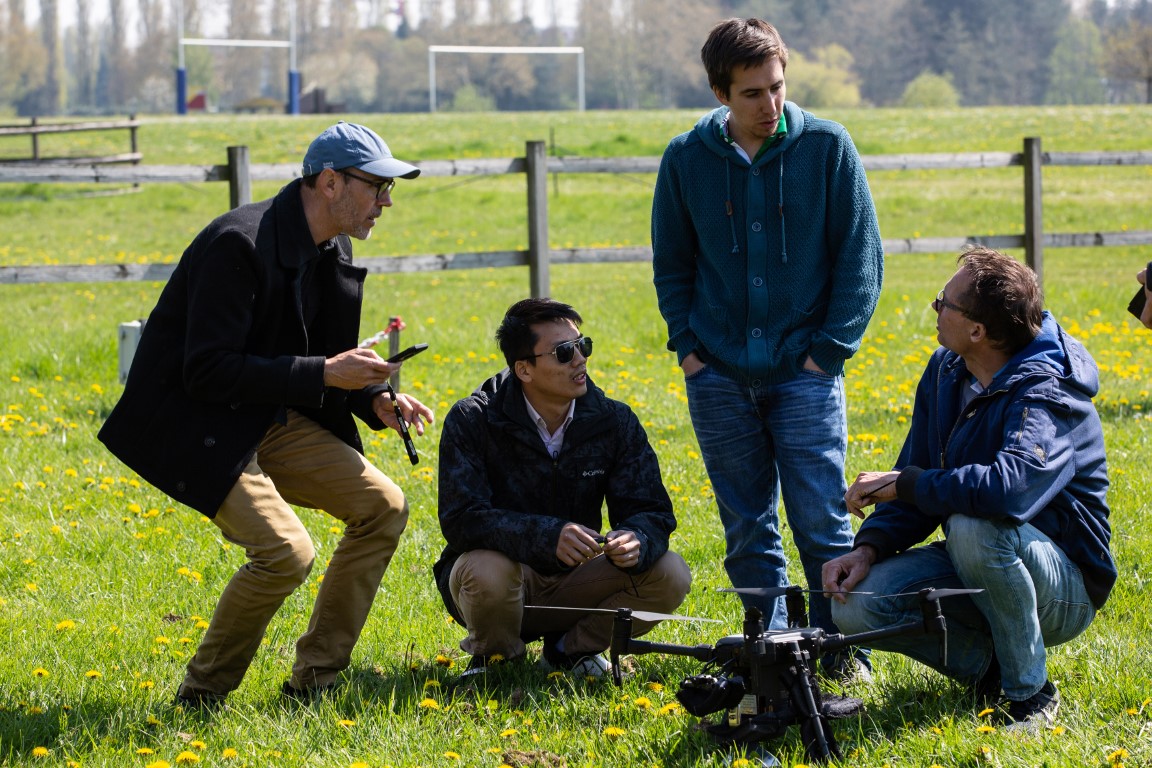
3. Cloud Remote Sensing Expertise Center
Contact: ccres_contact@listes.ipsl.fr
The Sirta is hosting the french unit (CCRES-FR) of the ACTRIS Centre for Cloud Remote Sensing (CCRES), a center offering operational support to ACTRIS National Facilities operating cloud remote sensing instrumentation. The CCRES-FR unit provides support and state-of-the-art expertise in Doppler Cloud Radar activities, developing new-generation technology and retrieval algorithms for cloud properties, target-based calibration procedures, and reference equipment for on-site calibration at ACTRIS national facilities. To sustain a high level of performance and to stimulate the advancement of new techniques and methodologies within the cloud remote sensing community, the CCRES-FR contributes to expert collaboration networks.
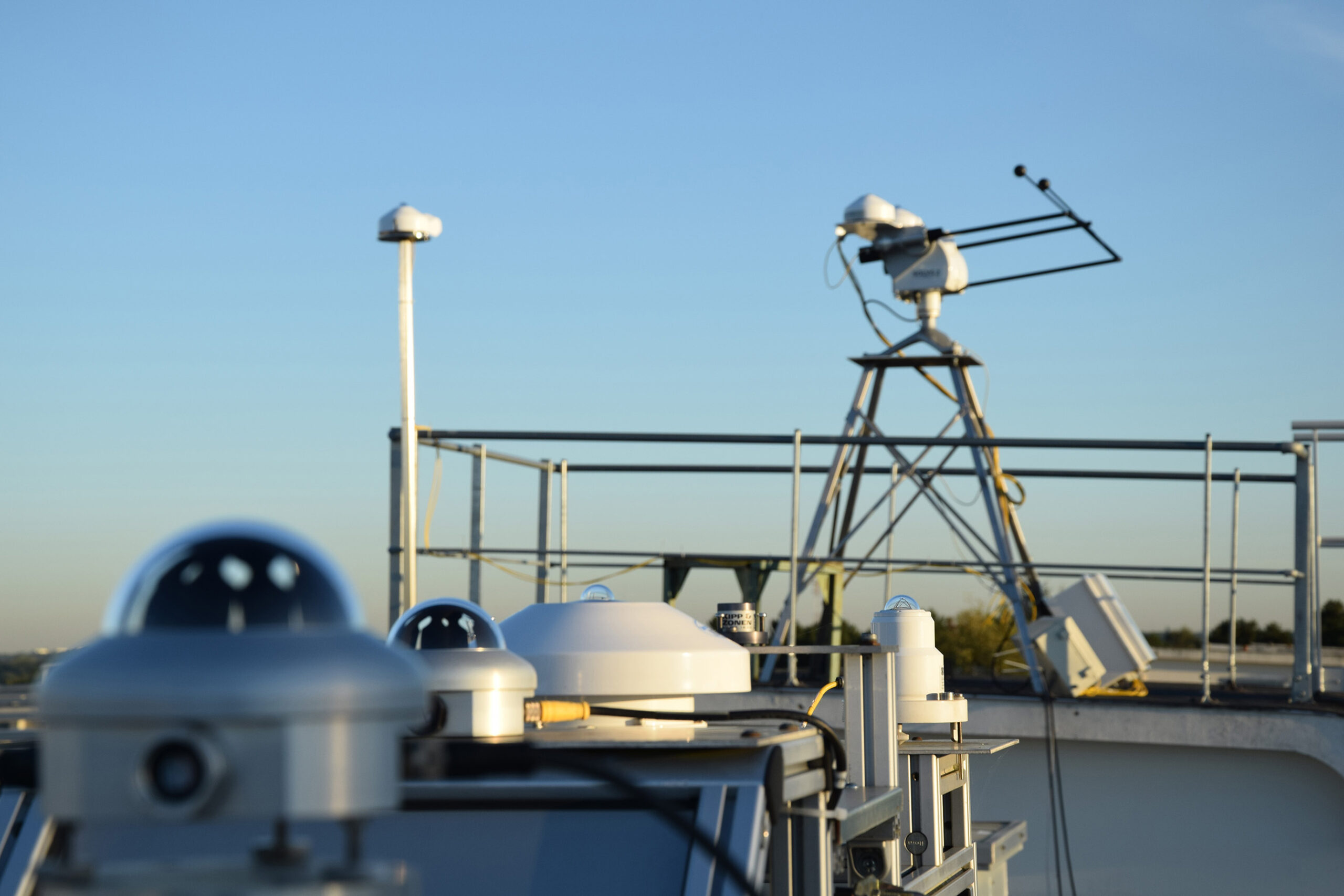
4. Radiative measurements
Contact: Jordi Badosa
In 2003, SIRTA joint the Baseline Surface Radiation Network (BSRN) with a roof-top radiative station (station PAL, for Palaiseau), equipped to measure shortwave (Global, direct and diffuse) and longwave downwelling irradiance. All radiometers are class A following the standards of the ISO 9060:2018. The radiometers are manned and strict quality control is applied to measurements before submission to BSRN.
Associated to these measurements, estimations of sky cover and clear-sky irradiance are applied following the Radiative Flux Analyses methodology developed by the Chuck Long’s team (Long and Ackerman (2000), Long and Gaustad (2004), Long et al., (2006)).
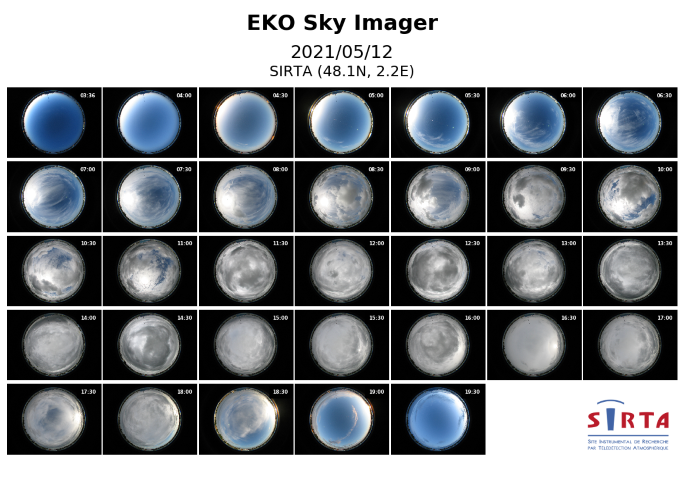
5. Cloud Cover and Sky Imager
Contact: Jean-Charles Dupont
The SIRTA is equipped with a total sky camera for the continuous visualisation of the sky state and cloud cover. The first camera was a TSI instrument, from 2008 to 2015. It was replaced by a EKO sky imager, which had been running since then. Those cameras are part of a network of sky imagers within ACTRIS-FR, from all the Instrumented Sites of the research Infrastructure. A common process of the total sky images of ACTRIS-FR is centralized at AERIS, with several harmonized products:
- Initial images dataset
- Daily mosaic of 24 images per day for a quick look of the sky for a given day
- Daily movie of all images taken per day
- Netcdf files with the cloud cover estimates, calculated with the ELIFAN algorithm
ELIFAN (Lothon et al. 2019) benefits from a CECIL lisense and a git-lab group. The latter enables the improvement of the algorithm through each new participation (adaptation to new cameras, or new collaborations).
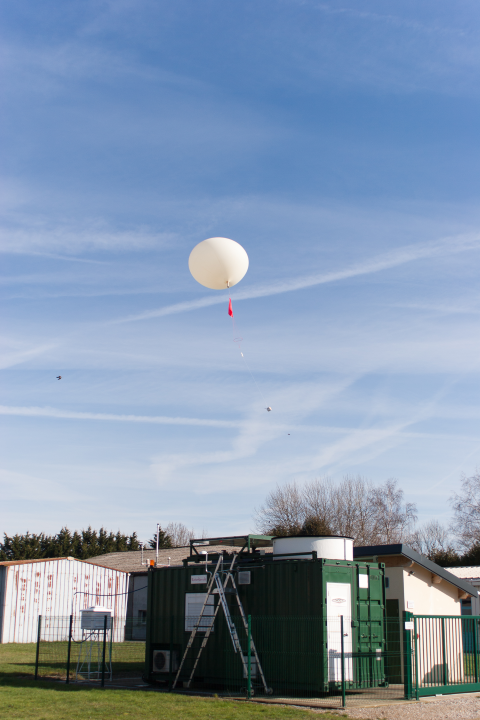
6. GRUAN
Contact: Jean-Charles Dupont
The GCOS (Global Climate Observing System) Reference Upper-Air Network (GRUAN) data processing for the Meteomodem M10 radiosondes has been developed to meet the criteria for reference measurement. Since September 2011, the M10 radiosonde has been regularly launched at Trappes (48.773°N and 2.012°E, French Met-Office station near Paris) and at Saint Denis (20.897°S and 55.495°E, French Met-Office station at La Reunion Island). Moreover, since April 2018 and October 2018, GRUAN pre-launching procedures are applied at Trappes and Saint Denis, respectively. These two French Met-Office stations are respectively associated with two Meteorological Observatory (SIRTA and OPAR, Maido, La Reunion) to provide active and passive remote sensing instrument data necessary for GRUAN site certification.
